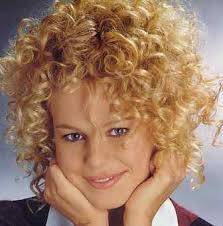Candus Thomson | On the Outdoors
March 2, 2008
March 2, 2008
Hard to believe, but Maryland and Virginia are on the verge of doing something historic, heroic and long overdue.
Elected officials and regulators in both states, with guidance from scientists, appear ready to save Chesapeake Bay blue crabs.
Population studies warn the bay crab stock is on the brink of collapse. If the number drops below 86 million, there may not be enough crabs to rebuild.
Without intervention, pictures like the one accompanying this column might be all that's left of the Chesapeake's most popular resident. And believe me, steamed crabs, Old Bay and newspapers go together a whole lot better than just Old Bay on newspapers.
Both states and Potomac River regulators share responsibility for managing and protecting blue crabs. But all they've managed to do so far is stop the plunge - they think.
Sad to say, but over the years officials only lived up to half of Maryland's motto. "Manly Deeds" always lost out to "Womanly Words." It has been easier for Maryland to go through the motions while pointing fingers at Virginia and making its officials the butt of jokes.
By allowing watermen to catch 70 percent of the female crabs - including pregnant ones - and permitting the dredging of hibernating crabs in winter, Virginia seemed to relish its backward ways.
All that changed Tuesday, when the Virginia Marine Resources Commission approved a short-term protection plan that will allow blue crabs - specifically the female ones - to live long enough to make more crabs. The commission also made clear at its April 22 meeting that it intends to make deep, long-term cuts in the length of the winter season, size limits and the number of crab pots it allows in its portion of the bay.
Just like that, Maryland's easy-out vanished. No more blaming Virginia. No more "We won't act until Virginia does." No more nibbling around the edges.
The reason for the shift? Science, in all its stark ugliness, has reached critical mass.
The Chesapeake's crab population is 30 percent of what it was in 1991. Last season, Maryland commercial crabbers harvested a shade under 22 million pounds, the second lowest on record. Their Virginia counterparts caught a similar amount.
Biologists say no more than 46 percent of the bay's crabs should be harvested each year to allow the stock to replenish itself. But watermen, it appears, have exceeded that threshold in eight of the past 10 years.
The crab pots are empty. Nobody's home.
"There's no doubt," VMRC commissioner Steven Bowman said. "The numbers don't lie. What pushed it over the edge was the fact that things are in bad shape and getting worse."
Bowman, VMRC's former top cop before his appointment to head the commission in July, is no pushover. That's a good thing, because the vote to curtail crabbing was carried out before about 100 angry watermen.
"Sometimes doing the right thing isn't the easy thing. Nobody wants to enact regulations that make it difficult for people, especially involving something as important as their livelihood," Bowman said. "But if we did not act ... it would be too late."
The commission capped at 55 the number of watermen allowed to winter dredge. Other measures reduce the number of "helpers" who can tend pots, require watermen to rig crab pots to let smaller crabs escape, and set soft crab minimum sizes to match those in Maryland.
Long-term, VMRC hopes to eliminate or reduce by two-thirds the length of the winter dredging season and cut the number of peeler and crab pots by 10 percent to 30 percent. Recreational crabbers would be allowed fewer pots. And perhaps most importantly, Virginia would set a maximum size for female crabs at 6.5 inches.
Last Thursday night, biologists at our Department of Natural Resources briefed about 100 watermen on proposals to restrict crabbing this year. The agency, which met with recreational fishermen last week, will do the same with state lawmakers before introducing new regulations in mid-April.
Whatever restrictions they propose should include recreational crabbers. Why should they be part of the solution? Because they may be part of the problem. The state has no idea how many recreational crabbers there are or how many crabs they catch. That's not good.
The simple solution is to register all recreational crabbers ($2 for adults, free for kids is not unreasonable) and require them to fill out harvest reports. DNR is initiating a voluntary crabber survey this season much as it has for striped bass and flounder. It should be mandatory.
Watermen in both states insist that the crab's decline is not because of overfishing. Poor water quality, a lack of aquatic grasses and hungry striped bass chowing down on crabs are the culprits, they say.
All those factors may be true. But we can't make the grasses grow faster. We can't clear the water overnight. And we can't blame fish for feeding.
What we can control are the number of people who catch crabs and the number they catch. Clearly, the numbers in both parts of the equation are way too many.
Maryland, the crab pot is now in your court.
================================================
Fishing reduces stress and gives you a break from our modern world where everything is going a million miles per hour
73
Check & Clear 6
LOC: 38-54-14.60N / 097-14-09.07W
Never miss a thing. Make Yahoo your homepage. __._,_.___
Your email settings: Individual Email|Traditional
Change settings via the Web (Yahoo! ID required)
Change settings via email: Switch delivery to Daily Digest | Switch to Fully Featured
Visit Your Group | Yahoo! Groups Terms of Use | Unsubscribe
Change settings via the Web (Yahoo! ID required)
Change settings via email: Switch delivery to Daily Digest | Switch to Fully Featured
Visit Your Group | Yahoo! Groups Terms of Use | Unsubscribe
__,_._,___
